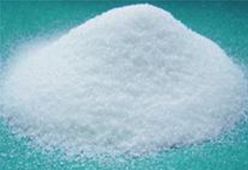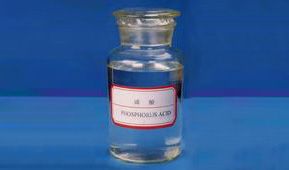Product center

Your location: Home - ProductsProducts

SINO-PHOS is mainly engaged in the wholesale and retail of chemical products. Its main products include phosphoric acid, sodium tripolyphosphate, sodium hexametaphosphate, sodium tripophosphate, sodium pyrophosphate, etc. At present, the company's products are widely sold to Syria,Luxembourg,Italy,Georgia and other countries and regions, and we are also actively exploring other overseas markets. Since its establishment, the company has always adhered to the concept of "integrity, cooperation, win-win, and mission". We are customer-oriented, continue to innovate around customer needs, strictly control product quality, and focus on providing customers with high-quality products and all-round services. In line with the tenet of "pursuit, growth, technology, spirit, and interests", the company now has a group of capable management talents and a high-quality professional team.
| Storage Type | Avoid sunlight and violent strike |
| Specification | 90% |
| Shelf Life | 1 year |
| Manufacturer | made in China |
| Ingredients | phosphate raw matrial products |
| Content | phosphate raw matrial products |
| Address | China |
| Instruction for use | phosphate raw matrial products |
| Place of Origin | guizhou, China |
| CAS No. | 7664-38-2 |
| Other Names | phosphoric acid solutions |
| MF | H3O4P |
| EINECS No. | 231-633-2 |
| FEMA No. | 2900 | PHOSPHORIC ACID |
| Brand Name | SINO-PHOS |
| Model Number | CAS 7664-38-2 |
| Product name | titration curve of phosphoric acid |
| Appearance | Solid or Viscous Liquid |
| Shelf Life | 3 Years |
| Usage | Acidity Regulators |
| Package | 200kg/drum |
| Function | Food Additives |
| Product Type | Food Additives |
| CAS | 7664-38-2 |
| Key word | Phosphoric Acid, PA |
| Color | ≤9(APHA) |
| Packaging Details | Packing of Factory supply Phosphoric Acid 85% 75% Phosphoric Acid Net weight 35KG, 286KG/386KG, 1650KG/1670KG per drum, Plastic drum, IBC drum, or based on the customers' requirement |
| Supply Ability | 9710 Metric Ton/Metric Tons per Month |
| Quantity (kilograms) | > 153 |
| Lead time (days) | 13 |



titration curve of phosphoric acid bearings FAQs Guide
titration curve of phosphoric acid is a colorless, odorless inorganic acid with the chemical formula H3PO4. It has a wide range of uses in various industries, including food and beverage, fertilizer production, and industrial cleaning. As a food additive, it is commonly used as a flavor enhancer and preservative. In fertilizer production, it serves as a source of phosphorous, an essential nutrient for plant growth. In industrial cleaning, it is used as an effective descaler for metal surfaces. Highly versatile and effective, titration curve of phosphoric acid is a vital ingredient in many products and processes.
2.What are the uses of titration curve of phosphoric acid?
3.Is titration curve of phosphoric acid biodegradable?
4.How is titration curve of phosphoric acid produced?
5.What compounds are produced when titration curve of phosphoric acid reacts with oxides?
6.What is titration curve of phosphoric acid?
7.In which industries is titration curve of phosphoric acid used?
8.20. What chemical products can titration curve of phosphoric acid be used to make?
9.What compounds are produced when titration curve of phosphoric acid reacts with a base?
10.What is the role of titration curve of phosphoric acid in soaps and detergents?
11.Is titration curve of phosphoric acid the same as phosphorus?
12.What are the applications of titration curve of phosphoric acid in the pharmaceutical field?
13.What are the potential health effects of titration curve of phosphoric acid?
1.What is the hazard of titration curve of phosphoric acid in fire?
We operate our titration curve of phosphoric acid business with integrity and honesty.
Phosphoric acid is a corrosive substance and can cause severe burns if it comes into contact with skin or eyes. In a fire, it can release toxic fumes, such as phosphorus oxides, which can irritate the respiratory system and cause difficulty breathing. It can also react with other chemicals and materials, potentially causing explosions or other hazardous reactions.
2.What are the uses of titration curve of phosphoric acid?
We pay attention to the transformation of intellectual property protection and innovation achievements. Your OEM or ODM order design we have a complete confidentiality system.
Phosphoric acid, also known as orthophosphoric acid, is a colorless, odorless, and syrupy liquid compound. It has a wide range of uses in various industries and is one of the most important industrial acids. One of its primary uses is as a food additive, often referred to as E338, which is used as a flavoring and acidifying agent in carbonated beverages and various processed foods. Phosphoric acid is also used in the production of fertilizers, detergents, and various other chemical compounds. In addition, it is commonly used as a rust inhibitor in metal treatments, as a pH adjuster in household cleaners, and as a catalyst in the production of high-performance plastics. It also has medical applications, such as in dental care as a component of toothpaste and in medications for kidney stones. With its many uses and applications, phosphoric acid plays a significant role in various aspects of our daily lives.

3.Is titration curve of phosphoric acid biodegradable?
We have established long-term and stable partnerships with our suppliers, so we have great advantages in price and cost and quality assurance.
No, phosphoric acid is not biodegradable. It is a strong acid and does not break down easily in the environment. It can be diluted and neutralized, but it will still persist in the environment for a long time.
4.How is titration curve of phosphoric acid produced?
Phosphoric acid is primarily produced through the wet process, which involves the reaction of phosphate rock with sulfuric acid. This process results in the production of a crude phosphoric acid, which is further purified through various methods, such as evaporation and filtration, to obtain the pure form of phosphoric acid.

5.What compounds are produced when titration curve of phosphoric acid reacts with oxides?
We are committed to providing personalized solutions and established long -term strategic cooperative relationships with customers.
When phosphoric acid reacts with oxides, it produces a group of chemicals called phosphates. This reaction results in the formation of different types of phosphates, such as monophosphates, diphosphates, and triphosphates. These compounds are important in various industrial and agricultural applications, such as fertilizers, detergents, and food additives. Phosphates also play a crucial role in biological processes, such as metabolism and cellular signaling. They are essential for the growth and development of plants and animals, making phosphoric acid an essential component in many industries and scientific fields.
6.What is titration curve of phosphoric acid?
We focus on providing high titration curve of phosphoric acid quality products and services.
Phosphoric acid is a mineral acid with the chemical formula H3PO4. It is a colorless, odorless, and highly corrosive liquid that is commonly used in the production of fertilizers, detergents, and food and beverages. It is also used in the production of pharmaceuticals, metal treatments, and water treatment. Phosphoric acid is an important source of phosphorus, an essential nutrient for plants and animals. It is also used as an acidifying agent in soft drinks and other food products.

7.In which industries is titration curve of phosphoric acid used?
We continue to improve titration curve of phosphoric acid products and processes to improve efficiency.
Phosphoric acid is widely used in various industries, including food and beverage, agriculture, pharmaceutical, and chemical manufacturing. It is commonly used as a food additive and flavoring agent, as well as a nutrient source in fertilizers for plants. In addition, it is an essential ingredient in the production of various medicines, such as antibiotics, antacids, and toothpaste. In chemical manufacturing, it is used as a catalyst and solvent in the production of synthetic resins, detergents, and plastics. Moreover, it has various industrial applications, such as in metal pickling, water treatment, and electronic manufacturing. With its versatile properties and uses, phosphoric acid plays an important role in many industries and is an integral part of our daily lives.
8.20. What chemical products can titration curve of phosphoric acid be used to make?
We continuously upgrade our skills and knowledge to adapt to changing titration curve of phosphoric acid market needs.
Phosphoric acid can be used to make fertilizers, detergents, food additives, water treatment chemicals, and industrial chemicals such as phosphates, phosphonates, and phosphoric esters. It is also used in the production of animal feed, pharmaceuticals, and metal surface treatment.

9.What compounds are produced when titration curve of phosphoric acid reacts with a base?
We pay attention to user experience and product quality, and provide the best product quality and lowest production cost for cooperative customers.
When phosphoric acid, a commonly used substance in fertilizers and food additives, reacts with a base, such as sodium hydroxide, several compounds are produced. These include water, a salt (such as sodium phosphate), and potentially hydrogen gas if a strong base is used. This reaction, known as neutralization, is an important process in chemical reactions and can be used to balance pH levels in various industries. Phosphoric acid is also critical in the body for maintaining proper electrolyte balance and supporting healthy bone growth.
10.What is the role of titration curve of phosphoric acid in soaps and detergents?
Phosphoric acid is not typically used in soaps and detergents. It is more commonly used in cleaning products such as toilet bowl cleaners and rust removers. In these products, phosphoric acid acts as a strong acid that helps to dissolve and remove mineral deposits and rust stains. It also has some disinfectant properties and can help to kill bacteria and other microorganisms. However, in soaps and detergents, other ingredients such as surfactants and enzymes are typically used to remove dirt and stains from surfaces.

11.Is titration curve of phosphoric acid the same as phosphorus?
No, phosphoric acid and phosphorus are not the same. Phosphorus is a mineral element, while phosphoric acid is a chemical compound that contains phosphorus. Phosphorus is an essential nutrient for plants and animals, and it is often used in the production of fertilizers.
12.What are the applications of titration curve of phosphoric acid in the pharmaceutical field?
Our titration curve of phosphoric acid products have competitive and differentiated advantages, and actively promote digital transformation and innovation.
Phosphoric acid, a colorless, odorless, and highly soluble acid, has a wide range of applications in the pharmaceutical field. It is commonly used as a pH adjuster, stabilizer, and flavoring agent in various medications and drug formulations. Additionally, phosphoric acid is also utilized in the production of various antibiotics, vitamins, and other pharmaceutical ingredients. Its anti-inflammatory properties make it a valuable ingredient in over-the-counter pain relievers, while its ability to bind calcium makes it beneficial in bone health supplements. Furthermore, phosphoric acid is essential in the production of phosphate salts used in the treatment of kidney stones and renal disorders.

13.What are the potential health effects of titration curve of phosphoric acid?
In small amounts, phosphoric acid is generally safe for human consumption. However, long-term exposure to high concentrations can cause damage to the teeth and bones. It can also irritate the skin and respiratory tract if inhaled.

